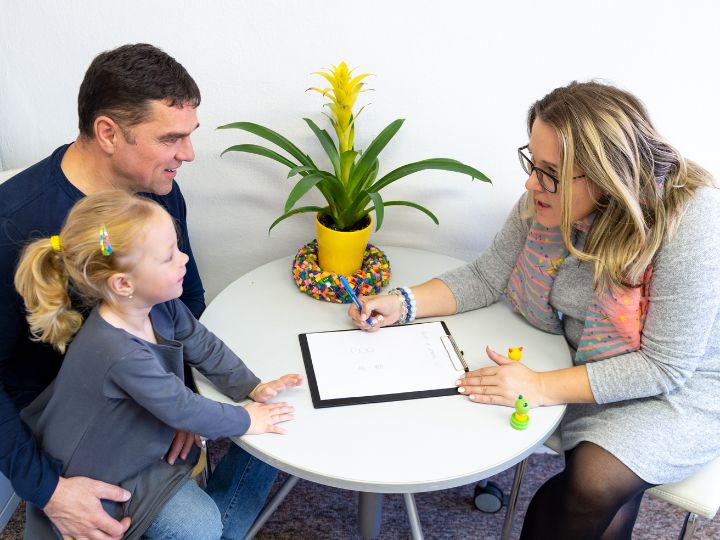When a child or individual displays challenging behaviors, it can be difficult to know how to respond effectively. Simply addressing the behavior without understanding why it’s happening often leads to frustration and limited success. That’s where a Functional Behavioral Assessment (FBA) becomes valuable in ABA therapy.
Understanding Functional Behavioral Assessment
A Functional Behavioral Assessment is a systematic process used to identify the underlying reasons or functions behind specific behaviors. Instead of just labeling a behavior as “problematic,” an FBA digs deeper to understand what purpose the behavior serves for the individual.
In ABA, behaviors are viewed as communication. They occur because they meet a need or achieve a desired outcome, whether that’s gaining attention, avoiding something unpleasant, or receiving a tangible reward. FBA helps uncover these motivations so interventions can be tailored effectively.
Why is FBA Important?
Without understanding the function of a behavior, attempts to change it are often ineffective or temporary. FBA provides a foundation for creating individualized behavior intervention plans (BIPs) that address the root cause of the behavior, rather than just the symptoms.
By identifying the triggers and consequences of maintaining a behavior, caregivers and therapists can replace challenging behaviors with positive alternatives, improving the individual’s quality of life and reducing stress for everyone involved.
The Key Components of Functional Behavioral Assessment
Indirect Methods
This first step involves gathering information from people who know the individual well such as parents, teachers, caregivers, and therapists.
Through interviews, questionnaires, and rating scales, these individuals share their observations about the behavior. This includes when and where it typically occurs, possible triggers, and what happens immediately after the behavior.
Qualitative data helps identify patterns and forms the initial understanding of the behavior.
Direct Observation
Next, the behavior analyst observes the individual in their natural environments (such as at home, school, or therapy sessions) to see the behavior in action. Observation is critical for collecting objective data about the behavior’s frequency, duration, intensity, and context.
During these observations, antecedents (events or conditions before the behavior) and consequences (events following the behavior) are recorded. This step helps validate or refine the information gathered from indirect methods.
Data Collection and Analysis
Data is collected systematically to capture precise information about the behavior’s occurrence. This might include using ABC data sheets (Antecedent-Behavior-Consequence), frequency counts, or interval recording. The data helps identify consistent triggers and outcomes associated with the behavior.
Hypothesis Development
Based on the collected information, the behavior analyst develops a hypothesis that explains the function of the behavior. This hypothesis answers the question: What is the individual trying to achieve or avoid through this behavior?
For example, the behavior might be a way to gain attention from others, escape a difficult task, access a preferred item, or fulfill a sensory need. This step is crucial because it directs the design of interventions rather than just addressing the behavior itself.
Functional Analysis (Optional)
In some cases, a more controlled form of assessment called a functional analysis may be conducted. This involves manipulating environmental variables in a structured setting to confirm the behavior’s function experimentally.
Although more time-intensive, functional analysis provides the most precise understanding of behavior. It is often used when indirect methods and observations don’t yield clear results.
Common Functions of Behavior
Most behaviors serve one of four primary functions:
- Attention: The behavior helps the individual get attention from others.
- Escape/Avoidance: The behavior allows the individual to avoid or get out of an unpleasant task or situation.
- Access to Tangibles: The behavior results in obtaining a desired object or activity.
- Sensory/Automatic Reinforcement: The behavior provides internal sensory stimulation or relief.
Understanding which of these functions applies is critical for designing interventions that work.
FBA Process: Step-by-Step
Functional Behavioral Assessment follows a clear process to understand and address behaviors. It involves the following:
- Identify Target Behaviors: Define the behavior clearly and specifically so everyone knows exactly what is being assessed.
- Collect Data: Gather information through interviews, direct observations, and checklists to understand when and where the behavior occurs.
- Analyze Patterns: Look for triggers (what happens before) and consequences (what happens after) to find patterns maintaining the behavior.
- Formulate a Hypothesis: Develop a theory about what the individual gains or avoids through the behavior.
- Develop Interventions: Create strategies that teach alternative, appropriate behaviors serving the same function as the challenging behavior.
How FBA Fits Into ABA Therapy
FBA is foundational in ABA because it informs behavior intervention plans (BIPs) that are specific and effective. Behavior analysts (BCBAs) work closely with families, educators, and other professionals to implement interventions based on FBA findings, ensuring a collaborative and supportive approach.
Conclusion
Not all behaviors are simply “bad” or “wrong.” Many serve a purpose for the person displaying them. Functional Behavioral Assessment is a systematic way to understand those purposes.
At Intellaplay ABA, ABA therapy in Maryland, we use to uncover why a specific behavior happens. This helps us create personalized strategies that support positive growth and meaningful change for children with autism.
If you’re interested in learning more about how FBA and ABA therapy can support your child or loved one, reach out to our ABA therapists today.






